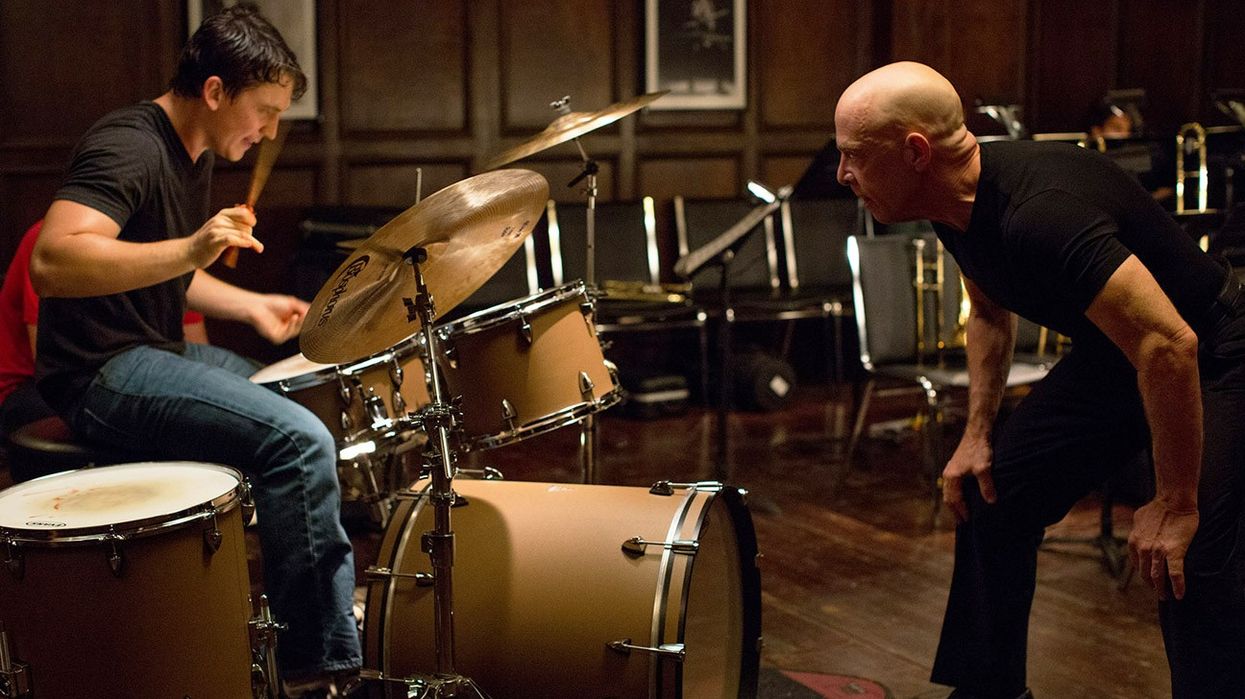Learn the 5 Fundamental Ways of Using Sound in Your Film
Listen up and discover how you can harness the power of sound in your productions.

We take it for granted now, but there was a time when films were completely silent. Well, maybe not completely silent, as cinemas found ways in the early days to provide live music to accommodate silent pictures, but early movies lacked the rich, layered and dynamic uses of sound that help define modern filmmaking.
To properly work with sound in your projects, it’s important to understand how the different types of sounds in films are used, as well as how you can use them.
1. Capturing diegetic sounds
In most productions, capturing diegetic sound is the first and most important audio concern. Diegetic sound is the "actual sound" of your production. That is to say, it’s all of the sounds that come from within your film’s world, including:
- Dialogue and sounds from your characters
- Sounds made by the environment
- Sounds from actions or the moving of objects
- Music or sounds represented as coming from within the world (an instrument being played or a jukebox playing a song)
Capturing diegetic sound is done through the traditional methods of filmmaking. This includes boom mics, audio recorders and the like. Diegetic sounds can also be replicated through other means later in post-production (more on that below).
Here are some good resources for capturing diegetic sounds during your production:
- How to Record Great Sounding Natural & Ambient Audio In-Camera
- Don't Fix It in Post: These Techniques Will Help You Record Better Location Sound
- Watch: Where Should Your Levels Be When Recording Audio?
2. Using non-diegetic sound
Non-diegetic sound is sound that comes from outside of your film’s world. These are "commentary sounds" which heighten the film experience for the audience by coming from sources which are neither visible on screen nor implied to be present in the film, such as:
- Narration
- Extra sound effects
- Soundtrack music that does not originate in the film’s world
Some good examples are Alec Baldwin’s narration in The Royal Tenenbaums or the Hans Zimmer’s soundtrack in Inception. The distinction, however, becomes tricky when you have diegetic sounds originate in the film’s world then transfer into non-diegetic sound as they become part of the soundtrack.
Working with non-diegetic sound is usually done outside of traditional production, however it is an important part of the filmmaking process as it’s used to create scenes, connect themes and characters, and generally tie a film together.
3. Exploring soundtrack options
Once you’ve decided on how you’d like to use diegetic and non-diegetic sound, you have plenty of options available to you, especially with soundtracks. In an ideal world, soundtracks are composed after you have an edit together and tailored specifically for the subtle thematics of your film. For most indie filmmakers on tight budgets, however, finding free or affordable resources to create soundtracks is more common.
If you’re looking for true original scoring for your films, you can always reach out to independent musicians who may be interested in collaborating. Many filmmakers have tight bonds with their composers who follow with them throughout projects as both their careers grow. You can also keep you eye peeled on Reddit Filmmaking and Composing communities where independent musicians sometimes post original soundtracks for fair use or offer to work on projects pro bono.
You can also look for royalty free music from sites or try some of the free libraries through Youtube.
4. When to consider silence
It’s also worth noting that one of the most important ways to make sound more noteworthy is to know when to not use it. Stylized breaks where either diegetic or non-diegetic sound is removed can create cinematic moments that can draw your audience into a scene or character or action.
5. Enhancing sound through the art of foley and ADR
Another part of sound in film that can be both diegetic and non-diegetic is the art of foley and ADR (automated dialogue replacement). Both are the process of re-recording sounds to either replace and cover audio imperfections or create additional missing sounds. You may be familiar with audio dubbing in film translations, but they can often be quite subtle and effective for making sound more seamless and professional.
Foley is the practice of using props to recreate sound represented in the film’s world and actually traces back to the early days of live broadcast radio before transitioning into film. ADR is also a handy technique that can be used when you find yourself in productions where capturing dialogue and audio may be problematic and needs to have small segments tweaked or changed or fully replaced altogether.
Using sound effectively in your project will immerse audiences in the world of your story. So be sure to seek out collaborators both in production and post-production to help you create the soundscape to bring your world to life.











